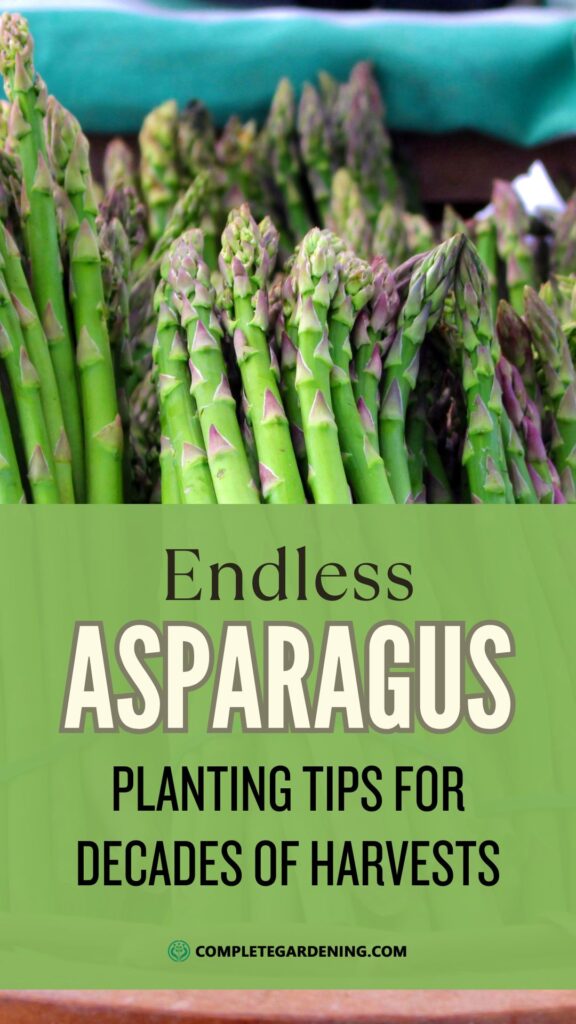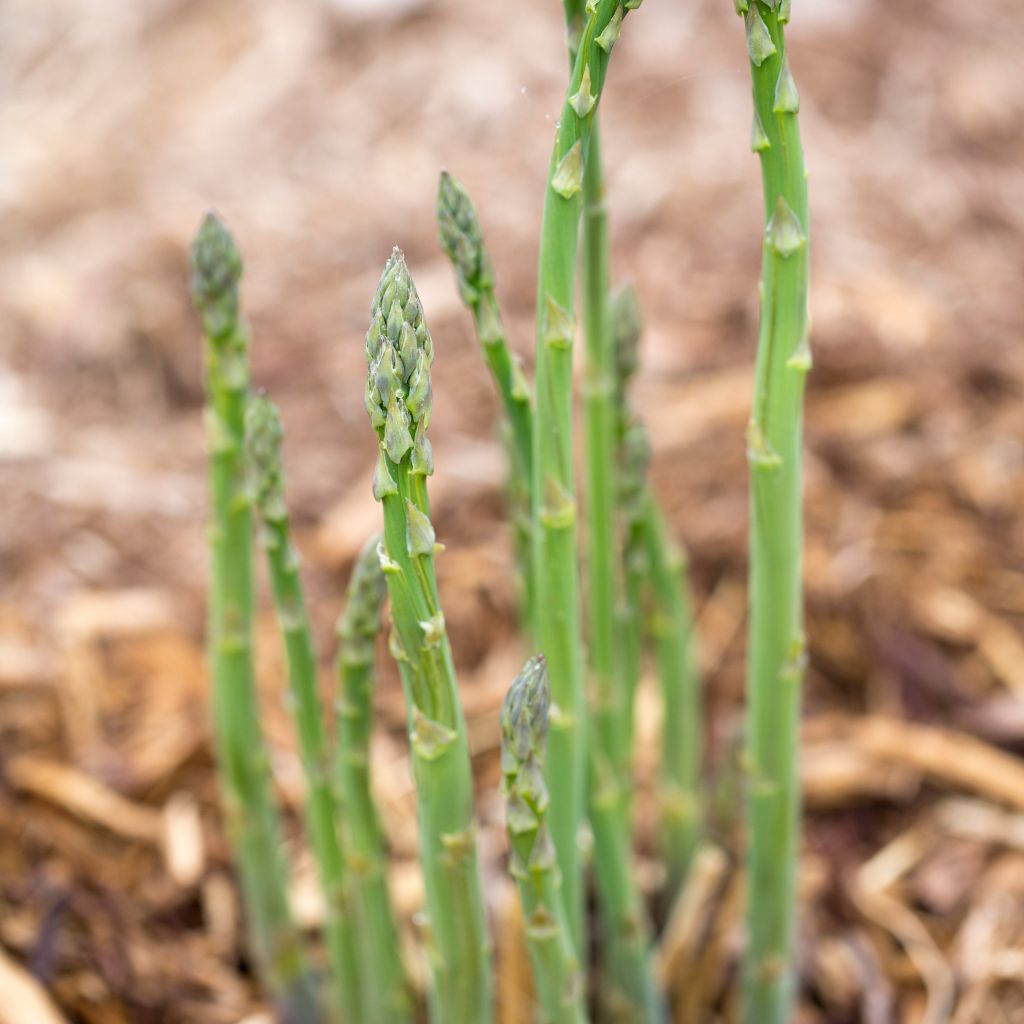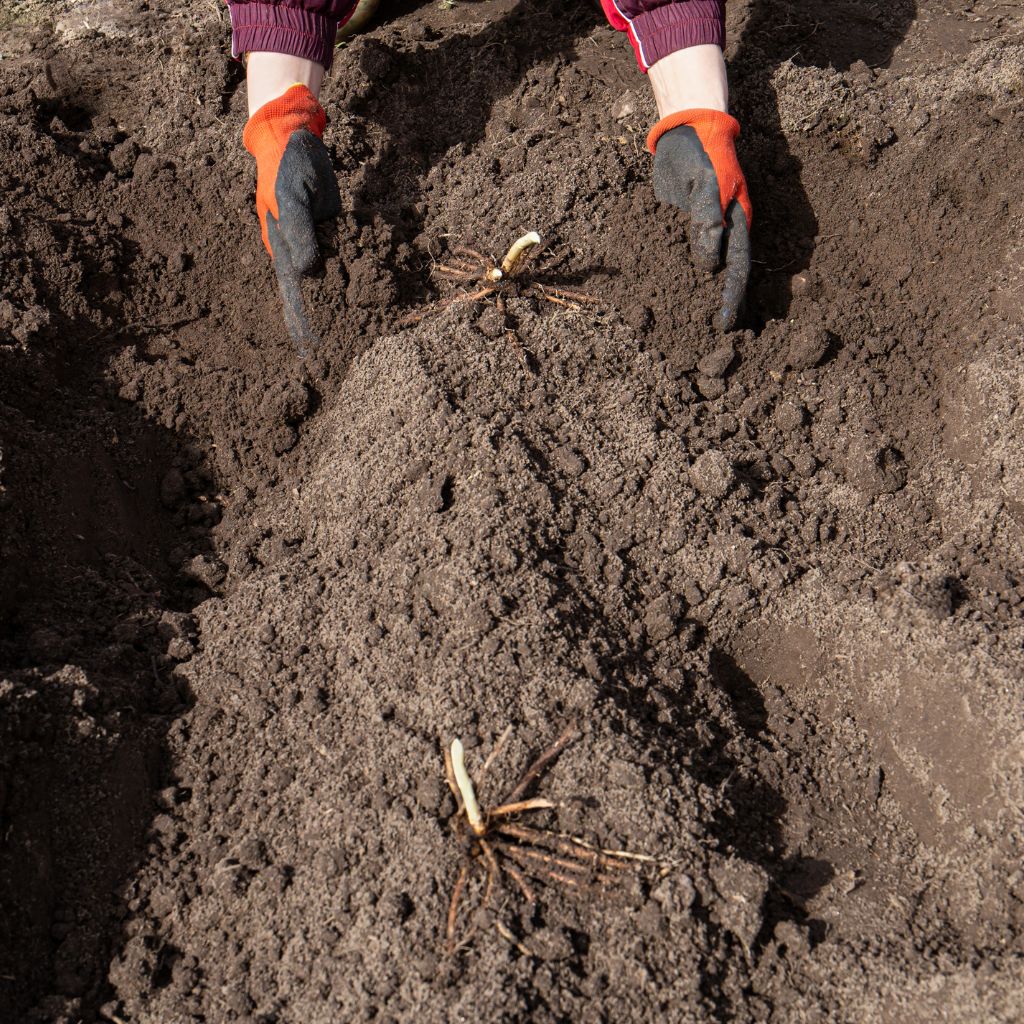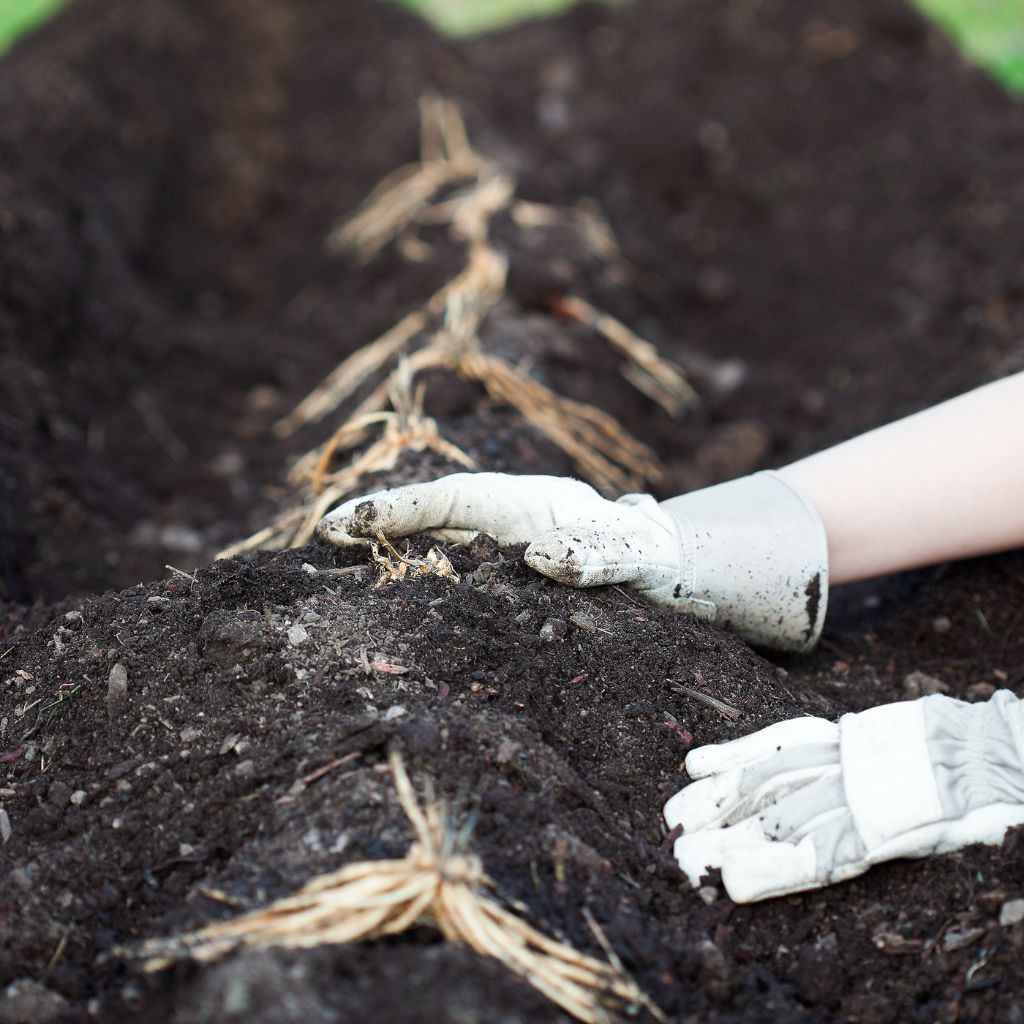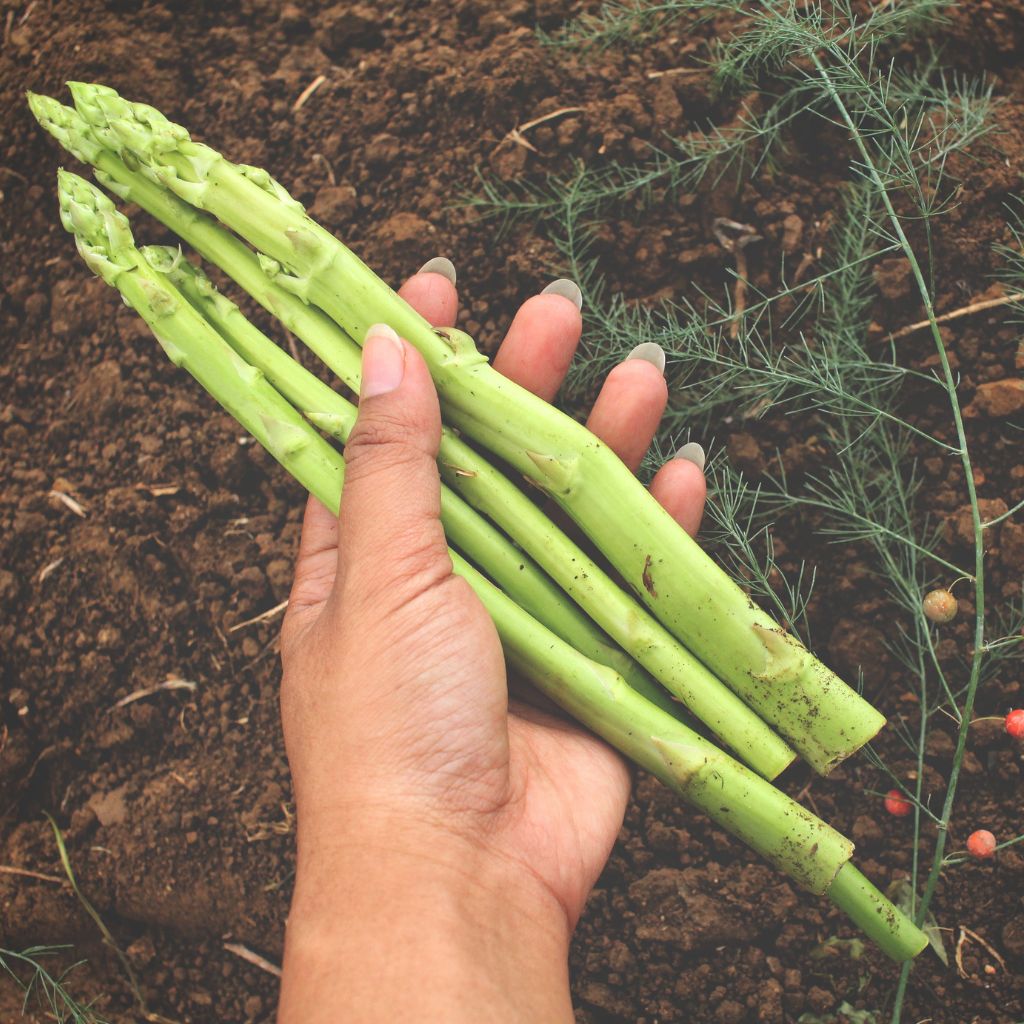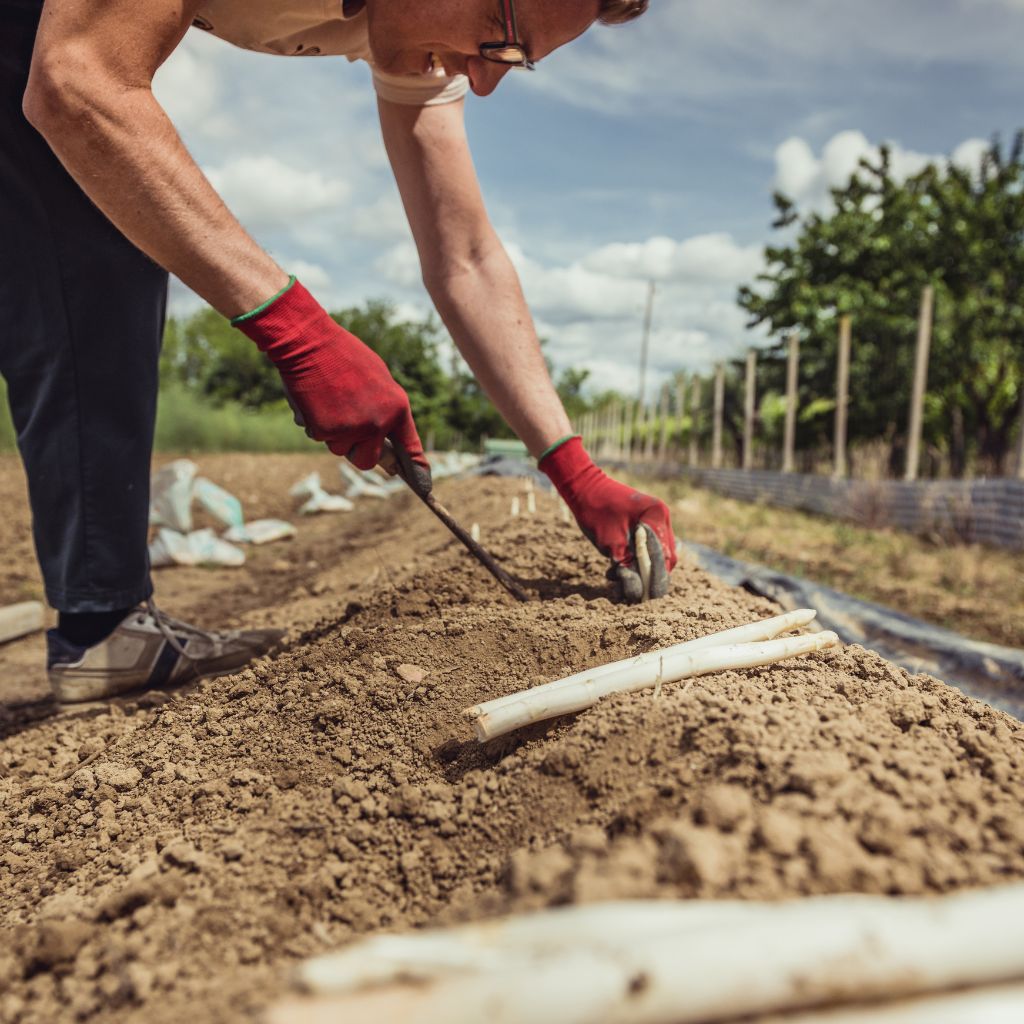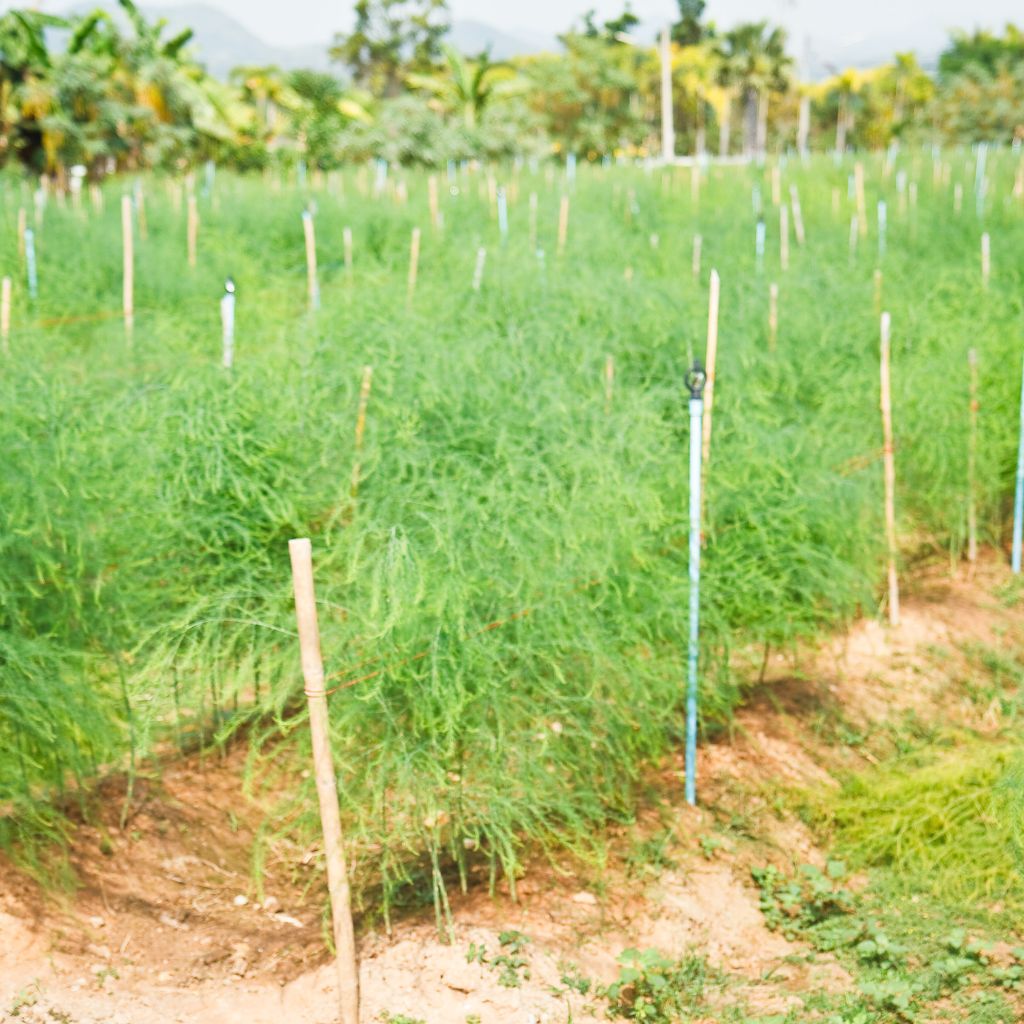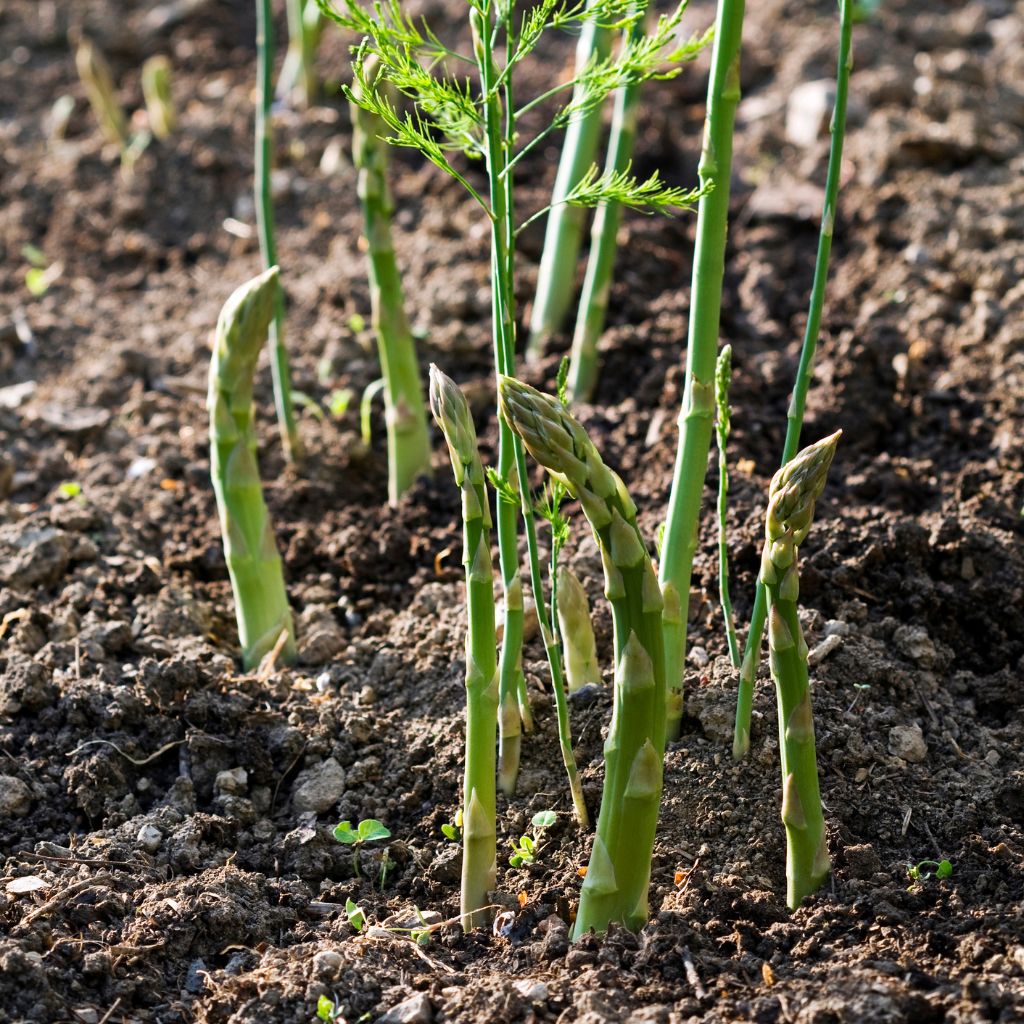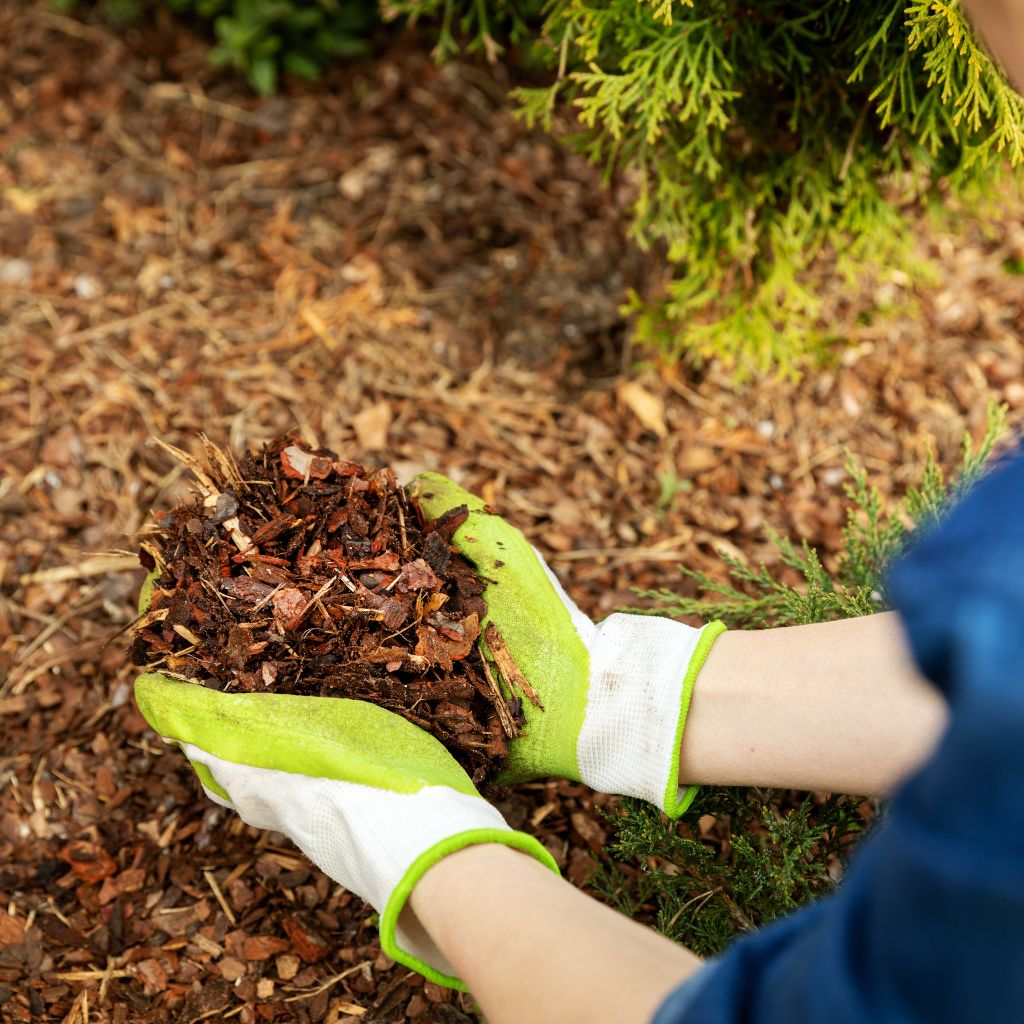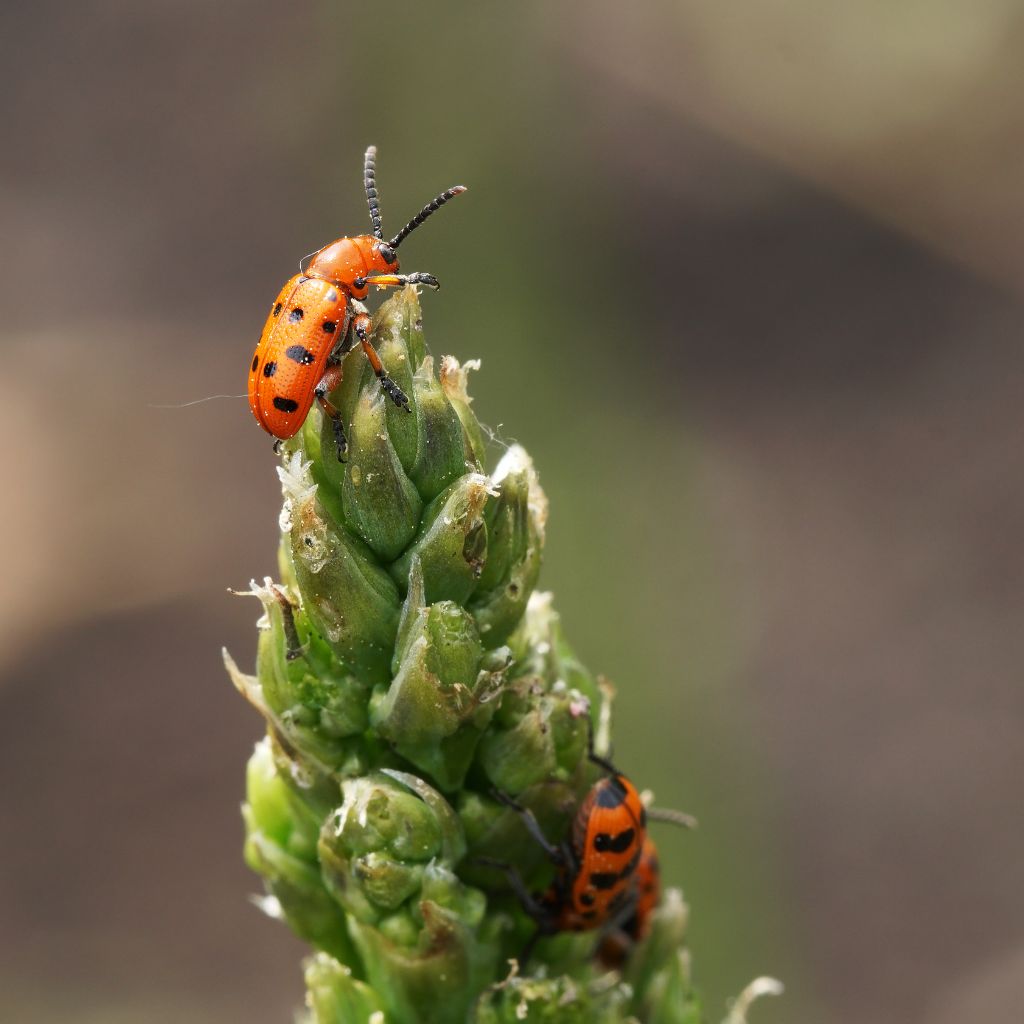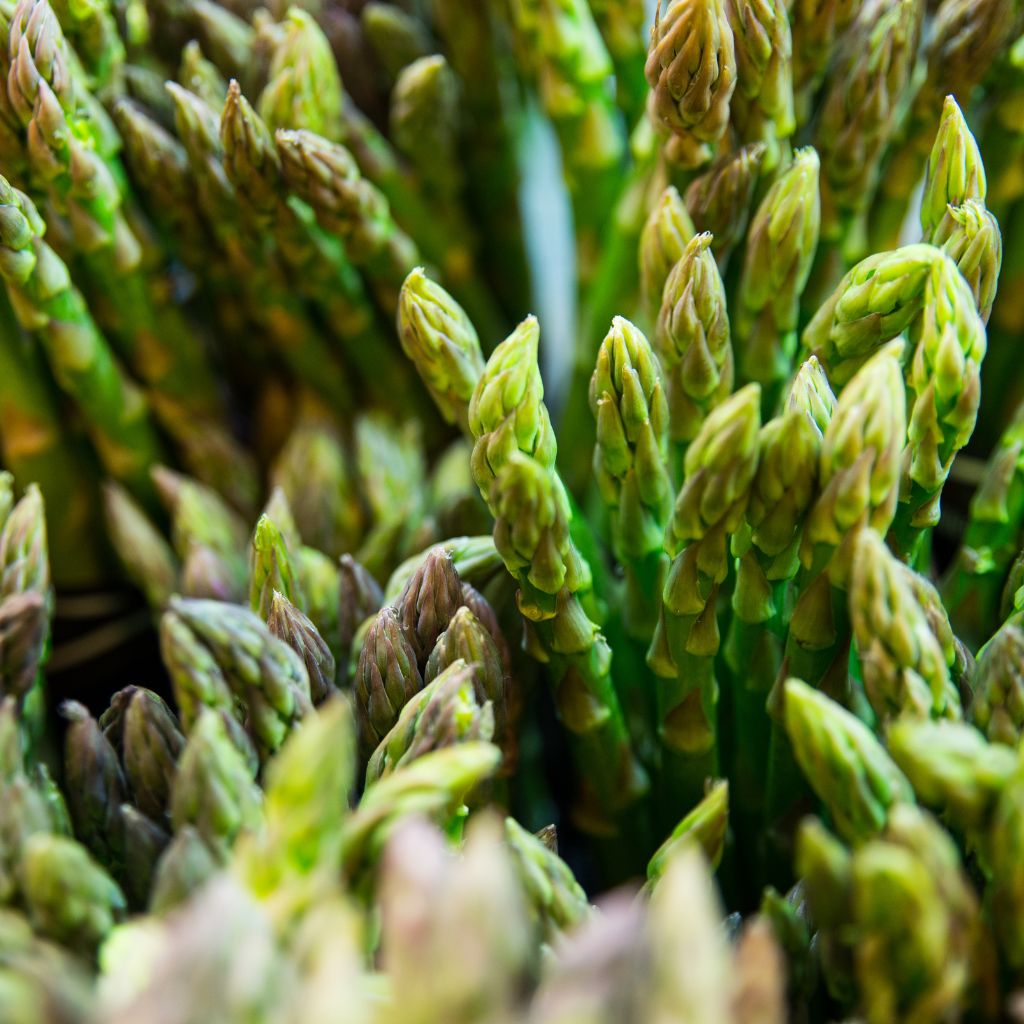Asparagus is a delicious and nutritious vegetable that can be enjoyed in a variety of dishes. However, buying asparagus from the grocery store can be expensive, and the quality may not always be the best.
Planting an asparagus bed in your own backyard can provide you with a steady supply of fresh asparagus for up to 20 or 30 years.
Understanding Asparagus Perennials
Asparagus is a perennial vegetable that can produce a bountiful harvest for up to 20 years or more with proper care and maintenance.
Unlike annual vegetables, asparagus plants have a long lifespan and do not need to be replanted every year.
One of the unique characteristics of asparagus is its ability to grow from a crown, which is a cluster of roots and stems that develop into a mature plant.
Asparagus crowns are typically planted in the spring or fall, and they require a well-draining soil that is rich in organic matter.
Once established, asparagus plants can grow up to 5 feet tall and produce edible shoots that are harvested in the spring.
Asparagus is a nutrient-dense vegetable that is high in fiber, vitamins, and minerals, making it a popular choice for health-conscious consumers.
To ensure a healthy and productive asparagus bed, it is important to understand the basic principles of asparagus cultivation.
This includes proper soil preparation, planting techniques, and ongoing maintenance such as fertilization, weed control, and pest management.
Overall, growing asparagus is a rewarding experience that can provide a steady supply of fresh, delicious vegetables for years to come. With the right knowledge and care, anyone can enjoy the benefits of a thriving asparagus bed.
Selecting the Right Asparagus Variety
When it comes to selecting the right asparagus variety, there are a few important factors to consider. The right variety will depend on your climate, soil type, and personal preference.
Here are some popular choices:
Jersey Giant, Jersey Supreme, and Jersey Knight: These hybrid varieties produce only male plants, which are more productive and larger than female plants.
Mary Washington: An heirloom variety that produces both male and female plants. It is a hardy and disease-resistant variety that is suitable for most climates.
Martha Washington: A female variety, which produce smaller spears but are known for their sweet flavor.
Purple Passion and Purple Pacific: Known for their unique purple color, which fades upon cooking. Purple Passion asparagus may be a good choice, if you live in a cooler climate, as it is cold-tolerant and produces vibrant purple spears.
White Asparagus: Not a separate variety, but grown by covering the spears to prevent sunlight, resulting in a milder taste.
UC157: If you live in a warmer climate, you may want to consider this asparagus variety, which is heat-tolerant and produces well in hot weather.
Ultimately, the right asparagus variety for you will depend on your specific growing conditions and preferences.
By considering factors such as climate, soil type, and male vs. female varieties, you can select the best variety to ensure a bountiful and delicious harvest for years to come.
Preparing the Asparagus Bed
Soil Requirements
Asparagus thrives in well-drained soil that is rich in organic matter. Before planting, it is important to prepare the soil by removing any weeds and adding compost or aged manure.
A pH level between 6.5 and 7.5 is ideal for asparagus growth. If the pH level is too low, lime can be added to raise it.
Location and Sunlight
Asparagus plants require full sun to produce a bountiful harvest. Choose a location that receives at least 6 hours of direct sunlight daily. Asparagus beds should also be planted away from trees and other plants that may shade them.
Bed Size and Configuration
The size of the asparagus bed will depend on the number of plants you wish to grow. A single row of plants should be spaced 18-24 inches apart, while multiple rows should be spaced 3-4 feet apart.
The depth of the trench where the plants will be placed should be around 6-8 inches.
It is important to note that asparagus is a perennial vegetable that will produce for up to 20 years. Therefore, it is important to plan ahead and choose a location that will not be disturbed by future construction or landscaping projects.
Planting Asparagus Crowns
Optimal Planting Time
Asparagus crowns should be planted in early spring when the soil temperature reaches around 50°F (10°C). This is usually around the same time that the first daffodils and crocuses start to bloom.
Planting too early can result in the crowns rotting, while planting too late can reduce the yield in the first year.
Planting Depth and Spacing
When planting asparagus crowns, it is important to dig a trench that is 12-18 inches (30-45 cm) deep and 12-18 inches (30-45 cm) wide.
The crowns should be spaced 12-18 inches (30-45 cm) apart in the trench, with the buds facing up.
The crown should be covered with 2-3 inches (5-8 cm) of soil, and the trench should be gradually filled in as the asparagus grows.
Watering and Initial Care
Asparagus requires consistent moisture, especially during the first two years of growth. Water the crowns regularly, especially during dry spells, to keep the soil moist but not waterlogged.
Mulching around the plants can help retain moisture and suppress weeds. In the first year, it is important to remove any shoots that appear, as they can weaken the crown.
After the first year, allow the shoots to grow into ferns, which will help the crown store energy for the following year’s harvest.
Maintaining Your Asparagus Bed
Fertilization Schedule
Asparagus beds require regular fertilization to maintain their productivity. In the first year after planting, it is best to avoid fertilization to allow the plants to establish themselves.
In the second year, apply a balanced fertilizer at a rate of 1 pound per 100 square feet in early spring before the spears emerge. Repeat this application every year in early spring before the spears emerge.
Weed Management
Weeds can quickly take over an asparagus bed and compete with the asparagus plants for nutrients and water. Hand weeding is the best method of weed control in an asparagus bed.
It is important to remove weeds before they go to seed to prevent future weed growth. Applying a layer of mulch can also help suppress weed growth.
Mulching for Soil Health
Mulching is an important practice in maintaining soil health in an asparagus bed. A layer of organic mulch, such as straw or shredded leaves, can help retain soil moisture, suppress weed growth, and provide nutrients as it breaks down.
Apply a layer of mulch 2-3 inches deep around the asparagus plants in early spring after the last frost. Avoid mulching too close to the plants to prevent rot and disease.
Harvesting Asparagus
When to Start Harvesting
Asparagus plants take a few years to establish before they can be harvested. Typically, you should wait until the third year after planting before you start harvesting.
This allows the plants to develop a strong root system and establish themselves properly.
Once the plants are mature enough for harvesting, you can start by harvesting the spears that are around 6-8 inches tall.
Harvesting should be done regularly, every 2-3 days, during the 6-8 week season.
Harvesting Techniques
To harvest asparagus, you need to carefully cut the spears at the base using a sharp knife or garden shears. It’s important to cut the spears at ground level to prevent any damage to the plant.
When harvesting, it’s important to only cut the spears that are the appropriate size. If the spears are too small, they won’t be worth harvesting, and if they are too large, they will be tough and woody.
Post-Harvest Care
After harvesting, it’s important to take good care of the plants to ensure that they continue to produce spears for years to come.
This includes watering the plants regularly, fertilizing them with a balanced fertilizer, and removing any weeds that may be growing around them.
Once the harvesting season is over, allow the asparagus plants to grow and develop their ferns.
These ferns will help the plants store energy for the next year’s harvest. In the fall, cut back the ferns and mulch the bed to protect the plants during the winter months.
Seasonal Asparagus Bed Care
Spring Preparation
In the spring, it’s important to prepare your asparagus bed for the growing season. Clear away any debris or dead foliage from the previous year, and add a layer of compost or well-rotted manure to the soil.
This will help to nourish the asparagus plants as they begin to grow.
It’s also important to keep the asparagus bed free of weeds, as they can compete with the asparagus for nutrients and water. A layer of mulch can help to suppress weed growth and retain moisture in the soil.
Summer Tasks
During the summer, the asparagus plants will be actively growing and producing spears. It’s important to keep the bed well-watered, especially during hot and dry weather.
As the spears begin to emerge, it’s important to harvest them regularly to encourage the plants to produce more. Cut the spears at ground level, and avoid damaging any emerging spears.
Fall and Winter Management
In the fall, after the asparagus plants have finished producing spears, it’s important to cut back the foliage and remove any dead plant material from the bed. This will help to prevent disease and pests from overwintering in the bed.
In colder climates, it’s important to protect the asparagus bed from frost and freezing temperatures. A layer of mulch or straw can help to insulate the soil and protect the crowns of the plants.
Troubleshooting Common Issues
Pests and Diseases
Asparagus plants can be susceptible to various pests and diseases that can affect their growth and yield. Here are some common issues and their solutions:
- Asparagus Beetles: These beetles feed on the foliage and can cause significant damage to the plant. They can be controlled by handpicking them or using insecticidal soap.
- Fusarium Crown Rot: This fungal disease can cause the asparagus crowns to rot and die. It can be prevented by planting disease-resistant varieties and practicing good soil drainage.
- Rust: This fungal disease causes orange or brown spots on the foliage. It can be controlled by removing infected foliage and using fungicides.
Poor Yield Solutions
If your asparagus bed is not producing as much as you expected, here are some possible solutions:
- Overcrowding: Asparagus plants need plenty of space to grow and produce. If they are overcrowded, they may not produce well. Thin out the bed if necessary.
- Poor Soil Quality: Asparagus plants prefer well-draining soil that is rich in organic matter. If your soil is poor, amend it with compost or other organic matter.
- Lack of Nutrients: Asparagus plants require a steady supply of nutrients to produce well. Fertilize the bed with a balanced fertilizer in the spring and fall.
Asparagus Fern Management
Asparagus ferns can be a problem if they are allowed to grow unchecked. Here are some tips for managing them:
- Cutting Back: Asparagus ferns should be cut back to the ground in the fall after the foliage has turned yellow. This will prevent the plants from becoming too large and invasive.
- Mulching: Mulching around the plants can help to suppress the growth of asparagus ferns and keep them under control.
- Regular Maintenance: Regular weeding and pruning can help to keep asparagus ferns from taking over the bed.
Renewing an Old Asparagus Bed
Asparagus beds can produce for decades if properly maintained, but eventually, even the most well-tended beds will start to decline.
When an asparagus bed stops producing, gardeners have two options: renovate the bed or start a new one.
Renovating an old asparagus bed involves digging up the old crowns and replacing them with new ones. This process can be time-consuming and labor-intensive, but it can also save money compared to starting a new bed from scratch.
To renovate an old asparagus bed, start by cutting back all the foliage in the fall after it turns yellow. Then, use a digging fork to lift the crowns out of the ground. Be careful not to damage the roots or any new shoots that may be growing.
Next, remove any dead or diseased crowns and separate the healthy ones. Each crown should have a healthy set of roots and at least one bud. Discard any crowns that don’t meet these criteria.
After the crowns are sorted, prepare the bed by adding compost or aged manure to the soil. Then, dig holes that are deep enough to accommodate the roots of the crowns. Place the crowns in the holes, making sure the buds are facing up and the roots are spread out.
Cover the crowns with soil, but don’t pack it down too tightly. Water the bed thoroughly, and then mulch with straw or shredded leaves to protect the crowns from freezing.
Growing asparagus is a long-term investment in your garden, but with patience and care, it will reward you with delicious harvests for decades. Enjoy the process, and look forward to fresh, home-grown asparagus each spring!

